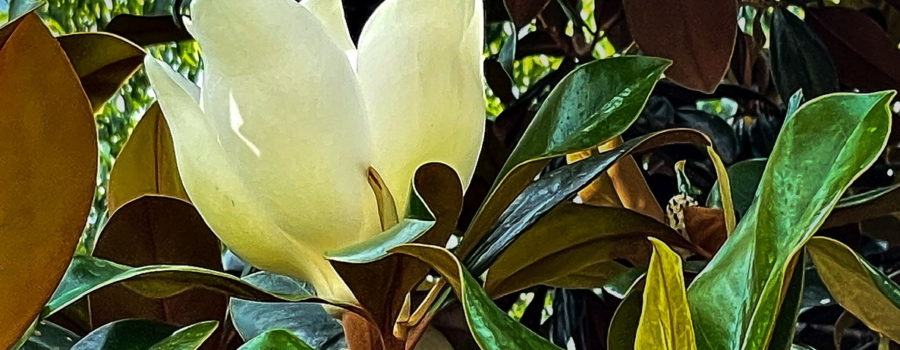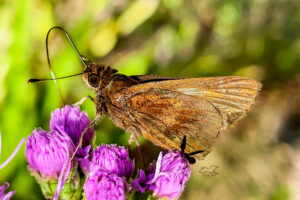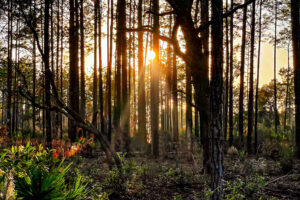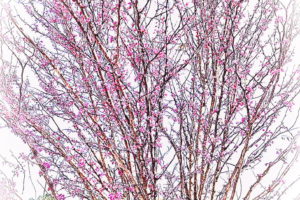The Southern Magnolia is Another Great Iconic Tree

One of my all time favorite trees is the southern magnolia (Magnolia grandiflora). It is also sometimes called the bull bay, laurel magnolia, evergreen magnolia, large flower magnolia, or big laurel. I had never seen one in person until we moved to Florida when I was in high school. The house my folks bought and my Mom still lives in has one growing in the front yard. It’s a strong tree with plenty of thick, strong branches that were great for climbing. I also fell in love with the huge, white flowers, even though back then they were the only thing I was allergic to. I had never seen a tree with big flowers like that before. And not only are the flowers amazing to look at, but they have a wonderful citrus scent. Many people will cut them and float them in water to create a lively scent in the house. After the flowering season is over, these gorgeous trees are still great to look at because they have large, shiny, dark green leaves that don’t turn brown or fall off until the new foliage comes in during the spring.

The southern magnolia is native to the southern United States from southern Virginia through central Florida and west into Texas. It prefers moist, well drained soils along the edges of rivers, lakes, and swamps. It likes shaded areas that get some sun, but not too much. Too much sun exposure can cause brown spots on the dark green leaves. It’s relatively hardy and can withstand flooding and drought, but it does not survive fire well, so it is not typically found in areas like the sandhills that have frequent fires. Although this tree is native to a very small area, it has been cultivated as an ornamental in many areas around the world, and has escaped and become naturalized in lots of those places. Fortunately, they don’t tend to become invasive since they are slow growing, don’t begin producing seeds until 10-25 years old, and even then only about 50% of the seeds are fertile.

When growing under ideal conditions, these trees can become quite large with heights up to 120 feet and trunk diameters of about 15 feet. Interestingly though, when conditions are less perfect, the tree can become a scrub-like bush that can spread laterally. Each flower becomes a cone-like fruit that lasts through the summer months and produces a cluster of bright red seeds. The seeds can be toxic to people, especially children, but are often eaten by birds, squirrels, quail, wild turkeys, possums, and other types of wildlife.

Along with it’s relatives the sweetbay tree and the cucumbertree, the wood from southern magnolias is simply called magnolia, and is used to make furniture, pallets, doors, blinds, and boxes among other things. The wood is heavy, strong, and has minimal shrinkage. It also tends to have a fairly straight, tight grain that is known for being shock resistant. In the south, it used to be a commonly used lumber for houses and other construction, but now most people have replaced it with more easily available hardwoods. Although perhaps not quite as well known as the southern live oak or the longleaf pine, the southern magnolia is still considered an icon of the south. It is the state tree of Mississippi and it’s flower is the state flower of Louisiana.






Recent Comments